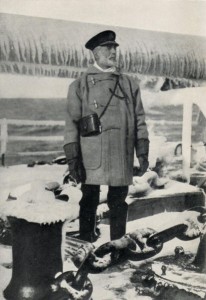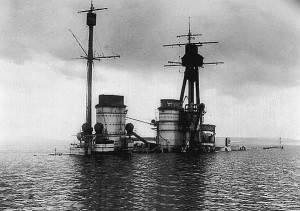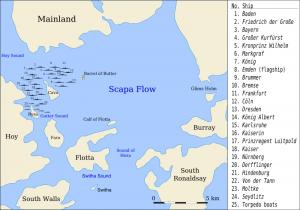Sydney Robert Fremantle – The Fourth Admiral
Sydney Robert Fremantle (1867 – 1958)
By Ken Harris
Sydney Fremantle was born on 16th November 1867, the eldest son of Captain (later Admiral) Edmund Fremantle. In 1881, he joined the Britannia training ship and in 1883, was promoted to midshipman of the Alexandra, flagship of Lord Alcester Commander-in-Chief of the Mediterranean. He served in various other ships, before being promoted to Commander in 1899 and to Captain of the battleship Albion in 1903. In 1910, he was made head of the War Division in the Admiralty, and was given the task of revising the ‘War Plan’, which had been previously been drawn up with little reference to those who would, if necessary, have to carry it out.
In 1911, he briefly commanded the Dreadnought, the very first of the big gun battleships. He was promoted to Rear-Admiral in 1913, and at the outbreak of the 1st World War, he was in the Admiralty again, as President of the Signal Committee, tasked with revising all the signal and code books used in the Navy.
However, he was anxious to return to active service, and in 1915, joined the Third Battle Squadron as second in command, which operated in the Mediterranean, and was part of the Dardanelles campaign. Later, in 1916, he was aboard the Russell, a pre-dreadnought ship, when it struck a mine near Malta and was sunk.
He escaped with only some broken bones in his foot, but 120 officers and men died, and amongst the possessions that Fremantle lost with the ship was Nelson’s telescope.
He then spent further time in the Mediterranean as part of the Salonika campaign, blockading the Dardanelles and Turkish ports, before being transferred to the Atlantic in 1917.
Syndey Fremantle oversees the internment of the German Fleet
In January 1918, Rear Admiral Sydney Fremantle became Deputy Chief of Naval Staff. A year later, he was promoted to Vice Admiral, and in May 1919, he returned to sea in command of the First Battle Squadron, where he oversaw the internment of the German Fleet at Scapa Flow. The Squadron were at sea on exercise when the German Navy scuttled the fleet rather than allow it to fall into the hands of their enemies. No blame was laid on him for this loss.
In 1920, he returned to the Mediterranean, with the First Battle Squadron. His last command, in 1923 following promotion to Admiral, was that of Commander-in-Chief Portsmouth, with his flag in the Victory, by then in dry dock and restored to its pre-Trafalgar state. It had been his great-grandfather’s ship, the Neptune, which had towed the Victory to Gibraltar after that famous battle. Like his father, he wrote a biography – ‘My Naval Career’. He died in London in 1958.
CLICK HERE TO RETURN TO THE FREMANTLE FAMILY
RETURN to World Influence Category
This post has 3 Simple Fields-fields attached. Show fields.




